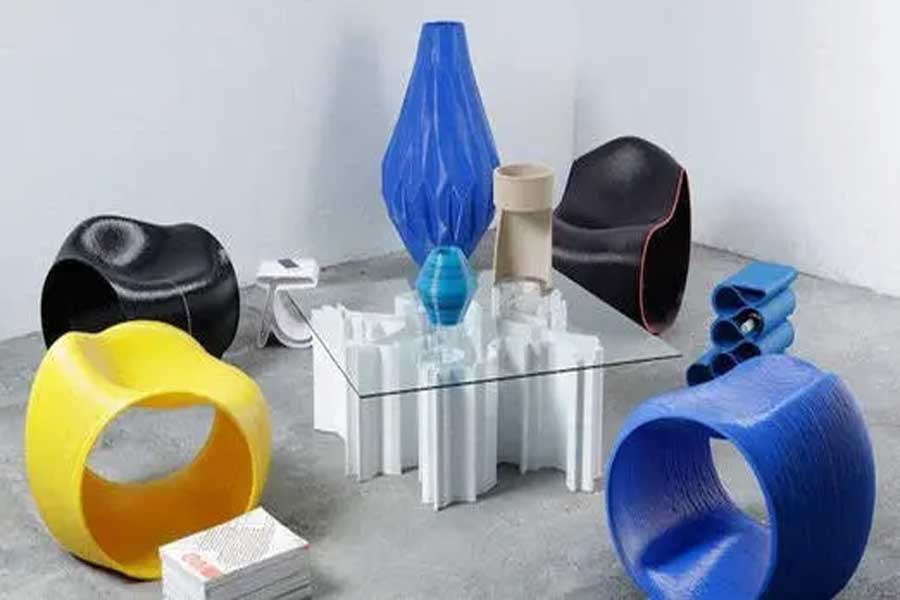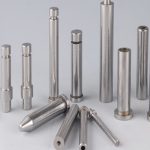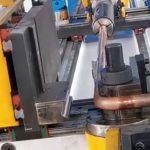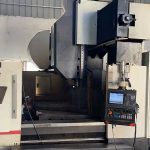A cooperative team from Oak Ridge National Laboratory solved the problem of the machine tool supply chain. The first step: 3D printing the largest casting.
In remote laboratories, scientists and engineers representing public and private companies are working to restore and stabilize the dominance of American manufacturing. The purpose is not to solve the problems of the US supply chain, but to speed up the discovery of our existing domestic machine tool industry problems. In other words, use the tools and technologies we now have to regain a competitive advantage.
The center of the operation is located at Oak Ridge National Laboratory (ORNL) in Tennessee, a federally funded scientific and technological research and development center sponsored by the U.S. Department of Energy (DOE). About 10 miles outside the ORNL green campus, you will find DOE’s manufacturing demonstration facility, a large open facility designed to “quickly demonstrate early R&D manufacturing technologies and optimize key processes.”
Recently, there has been a report of a plan promoted through ORNL, which aims to increase the throughput of the existing CNC machine tool base in the United States. However, the core technology that scientists at ORNL’s manufacturing demonstration facility are trying to develop is additive manufacturing (AM).
Both the publication and the Additive Manufacturing Journal have written extensively about how CNC machining and additive manufacturing are becoming increasingly integrated. The most common is to use 3D printing tools to greatly shorten delivery time and reduce costs, especially for small-batch manufacturing, high-value parts. However, the goals of the latest experiment by Oak Ridge scientists are much higher than 3D printed jigs and fixtures.
What is its goal? To 3D printer bed itself, or at least its largest component.
Oak Ridge National Laboratory Project
Next to the base mold of the 3D printer bed at the Oak Ridge National Laboratory, standing inside the Cincinnati BAAM machine. Image source: Oak Ridge National Laboratory
Don’t break the rules
ACE stands for the “Forefront” program in the United States, which represents a new collaboration between DOE and DOD’s industrial fundamental analysis and sustainability programs. ACE is composed of a series of projects that are a collective response to the decline in U.S. machine tool capabilities over the past few decades, and the Department of Defense regards this phenomenon as a threat to national security. The reason for the decline is the decline in the United States’ share of the global machine tool market (from 23.2% in 1998 to 6.2% in 2010) and the difference between the United States’ import spending on machine tools ($8.6 billion in 2018) and export sales. (US$4.2 million).
According to Tony Schmitz, a professor at the University of Tennessee Knoxville and ORNL co-faculty member, when the ACE program was launched, several industry partners: the Office of Industrial Policy of the Department of Defense, Industrial Basic Analysis and Maintenance Program, ORNL, Advanced Composite Manufacturing Innovative Company and the University of Tennessee Knoxville jointly discussed the idea of using Oak Ridge large-format polymer printing to produce basic molds for concrete machine tools.

The reason is simple: most machine tools have cast components, and the US foundry infrastructure that meets these needs has fallen sharply in recent decades. Schmitz said, for example, in 1987, there were 774 cast iron facilities in the United States. In recent years, this number has fallen to less than half, or 330. Schmitz said that many of these remaining facilities do not have the scale and scale to produce castings for large machine tools. The result is a large-scale shift to foreign sources of large machine castings.
The ACE team believes that the redeployment of machine tool infrastructure will bring the following advantages: the growth of the US economy and manufacturing labor, the support of the Department of Defense, and the shortening of the supply chain and transportation distance between large casting manufacturers and machine tool OEMs. Based on Oak Ridge’s experience in large-format polymer 3D printing, it believes that 3D printed polymer molds filled with concrete can provide a better alternative than traditional metal castings.
The machine the team is building is actually a hybrid tool, a combination of a three-axis vertical CNC machining center and an arc 3D printer, and its workload can make it just within the mid-size range of a typical VMC. However, the 3D printing mold used for the machine base is very large: 156 inches x 78 inches x 96 inches, all printed in Oak Ridge using Cincinnati’s BAAM system, using 20% carbon fiber ABS particles to melt and extrude to deposit in multiple layers . The calculated wall thickness can withstand the next pressure introduced: 15,000 pounds of poured concrete.
The custom reinforcement structure was lowered in the 3D printed mold. Before the concrete pouring starts, the sensor is fixed on the steel bar.
(Note about the use of the term “mold” here: The engineers who built the hybrid machine at ORNL decided to keep the 3D printed structure in place, which made the component more of a shell than a mold. However, they also Indicates that there is no need to leave the shell in place at all. In this case, the term “mold” is more appropriate.)
In September, ORNL poured concrete into the mold. Once the mold was placed outside, the team lowered the prefabricated steel structure to fit its internal dimensions. This reinforced structure not only enhances strength, but also serves as a temporary area for multiple sensing units including temperature recorders and three-axis accelerometers.
When the concrete fills the cavity within 30 minutes, it has multiple sensors embedded in the base, which can be accessed through a wire feeder located outside the machine. When the engineers calculated that the expected pressure inside the mold was 3.8 megapascals, they designed the structure to withstand a yield strength of 16.4 megapascals in the vertical direction, and the layer direction of the printed matter represented the lowest strength of the design.
After pouring, the equipment is still outside as the curing progresses. The sensor tracked the internal temperature rise to 150°F (this temperature is not caused by the summer heat in Tennessee, but an exothermic reaction as the concrete begins to solidify). The mold stayed outside for the next 20 days.
When the concrete is completely cured, the entire unit is turned over 90 degrees and transported in the manufacturing demonstration facility. The next set of tests will utilize an accelerometer embedded with a concrete base.
Engineers performed impact tests on the area where the machine workbench was located to measure structural dynamics before installing the controller. Later, when the machine is finished running, these natural frequencies, modal stiffness values and damping ratio will affect the performance of the machine, and embedded sensors will help monitor the vibration of the machine and inform the overall speed and feed selection. But the next step (coming soon) will be to install the welding torch (which will be used in the online arc AM process) and the milling spindle.
When all this was done, and when the system was integrated with CNC, the moon landed.
However, at least one sharp contrast between the traditional machine base and the 3D printed/concrete machine base has been determined. The cost of concrete is about $100 per cubic yard, or 2.5 cents per pound. Schmitz said that although the cost of cast iron is always dependent on the floating ratio of part size, complexity and quality, the typical cost of castings shipped from Asia to the United States is between 75 cents and $2.50 per pound. The cost of 3D printing mold material is $6 per pound, and it has the ability to reuse and recycle the material. You can still use 3D printing molds and concrete to save a lot of cost. These considerations are all part of the overall benefits that the ACE team envisioned for the project.
Schmitz said: “We are trying to carry out a moon landing plan in a manufacturing demonstration facility that is usually aligned with IMTS.” “Its role is to really extend the thinking and imagination of researchers working side by side with the industry to understand whether we can Beyond what is considered a limit. This is just one example of this kind of thing.”
Dr. Lonnie Love, the leader of ORNL’s manufacturing system research team, said: “The pressure is really great.” “You know, for this project, we have developed new materials, new processes, and new Control measures. The end result is not that we have solved all the problems. But it speeds up our identification of the actual problems that we need to understand.”
Link to this article: Cooperative team to solve machine tool supply chain problems: 3D printing may be the first choice
Reprint Statement: If there are no special instructions, all articles on this site are original. Please indicate the source for reprinting:https://www.cncmachiningptj.com/,thanks!
 Sheet metal, beryllium, carbon steel, magnesium, 3D printing, precision CNC machining services for heavy equipment, construction, agriculture and hydraulic industries. Suitable for plastics and rare alloys machining. It can turn parts up to 15.7 inches in diameter. Processes include swiss machining,broaching, turning, milling, boring and threading. It also provides metal polishing, painting, surface grinding and shaft straightening services. The production range is up to 50,000 pieces. Suitable for screw, coupling, bearing, pump, gearbox housing, drum dryer and rotary feed valve applications.PTJ will strategize with you to provide the most cost-effective services to help you reach your target,Welcome to Contact us ( [email protected] ) directly for your new project.
Sheet metal, beryllium, carbon steel, magnesium, 3D printing, precision CNC machining services for heavy equipment, construction, agriculture and hydraulic industries. Suitable for plastics and rare alloys machining. It can turn parts up to 15.7 inches in diameter. Processes include swiss machining,broaching, turning, milling, boring and threading. It also provides metal polishing, painting, surface grinding and shaft straightening services. The production range is up to 50,000 pieces. Suitable for screw, coupling, bearing, pump, gearbox housing, drum dryer and rotary feed valve applications.PTJ will strategize with you to provide the most cost-effective services to help you reach your target,Welcome to Contact us ( [email protected] ) directly for your new project.
Link to this article:Cooperative team to solve machine tool supply chain problems: 3D printing may be the first choice
Reprint Statement: If there are no special instructions, all articles on this site are original. Please indicate the source for reprinting:Alloy Wiki,thanks!^^







